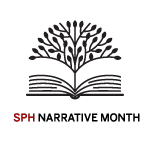New Health Communication Certificate Introduced.

When it comes to promoting health, the power of media goes far beyond what a simple public service announcement can accomplish. “Very often, people think stereotypically about mass media campaigns being about making people aware of a health problem and getting them to assess their personal risk, period,” says William DeJong, professor of community health sciences, who leads the new Health Communication and Promotion certificate.
“There’s so much more that needs to be conveyed—and can be conveyed—to motivate and enable behavior change.”
Instead of an easily-ignored warning, he says, messages can drive and promote policy change, influence  social norms, and give people the skills and confidence change behavior.
social norms, and give people the skills and confidence change behavior.
At the center of the 16-credit functional certificate within the master of public health degree program, DeJong says, is learning how to decide what exactly needs to be conveyed, and then exploiting a vast set of communication tools to create and execute the most effective message. It also involves evaluating those messages and campaigns to make sure they are truly effective.
“In the early planning stages, you have to be very detail-oriented, you have to be exhaustive in your thinking, and the planning document has to be precisely worded in order to provide proper guidance,” DeJong says. “Nobody enjoys that! But once it’s done, then you can just have tremendous fun thinking about different ways of communicating the message that people will find engaging and motivating.”
The tools to tell these stories are myriad—TV campaigns, social media, news interviews, policy briefings—and so are the jobs where health communications is vital, DeJong says. The certificate provides skills used everywhere from government to nonprofits, insurance companies to grant foundations, news organizations to biotechnology companies, educational institutions to hospitals.
The message is only as good as the information behind it, DeJong says—and information is only valuable when it gets communicated. “The research work that we do is immaterial until it is somehow translated into practice, and therefore communicated to practitioners or the general public,” he says. “It’s something that researchers need to make happen, and that means being an effective communicator.”
Ultimately, DeJong says, “we respond to stories in a way that we don’t respond to statistics.”
He points to gun safety as one example. “People have a superhero script in their head,” he says. “You buy a firearm for self-defense, and if you have that motivation then having your gun stored away in a safe with a trigger lock on it defeats the purpose.” It doesn’t matter to some gun owners that home invasions are far rarer than accidental shootings, domestic violence, or suicide, he adds.
“You need to find a way to make those stories as compelling, if not more compelling, than the superhero fantasy that almost never happens,” he says. “Statistics alone will not accomplish that.”
Learn more about the Health Communication and Promotion certificate.